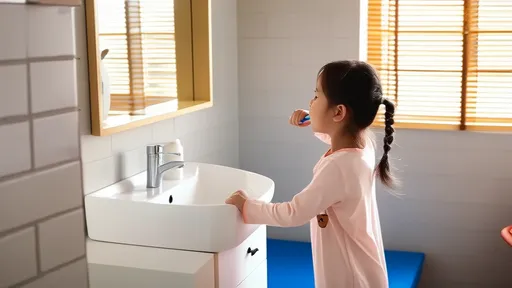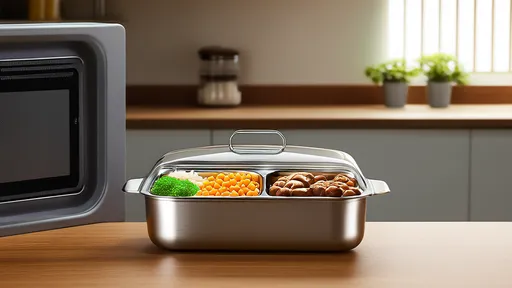In our modern sedentary lifestyles, finding time for physical activity can be challenging. Yet, what if you could combine relaxation with movement? Television time, often considered a passive activity, can actually be transformed into an opportunity for gentle stretching and mobility exercises. This innovative approach allows viewers to stay active without sacrificing their favorite shows or compromising comfort.
The concept of TV-time stretching isn't about intense workouts that make you miss crucial plot points. Rather, it's about incorporating subtle movements that improve flexibility, reduce stiffness, and promote better posture—all while comfortably seated or standing near your viewing area. Many people don't realize how much tension builds up during prolonged sitting, especially when engrossed in gripping television content. The shoulders creep up toward the ears, the spine slouches, and muscles remain static for extended periods.
Neck rolls and shoulder shrugs make perfect opening movements during commercial breaks or slower scenes. These simple motions help release the tension that accumulates when we remain focused on the screen for too long. The beauty lies in their simplicity—no equipment needed, no complicated routines to memorize. Just gentle circular motions with the head or lifting the shoulders toward the ears before releasing them down can make a significant difference in how the body feels after a viewing session.
For the lower body, seated leg extensions offer an excellent way to keep blood circulating. While comfortably seated on the couch, straightening one leg at a time and holding for a few seconds engages the quadriceps and stretches the hamstrings. This movement becomes particularly valuable during longer viewing sessions, preventing that stiff feeling when you finally stand up. The movement is subtle enough not to distract from the show yet effective enough to provide real physical benefits.
Twisting motions naturally lend themselves to television viewing. A gentle spinal twist while seated can be performed during any scene that doesn't require your full visual attention. These rotations help maintain spinal mobility and can even aid digestion—especially useful if you're enjoying snacks during your show. The key is to move slowly and with control, using the back of the couch or chair for support if needed.
Commercial breaks present golden opportunities for slightly more involved stretches. Standing up during these intervals to perform a forward fold or side stretch gives the body a more complete range of motion than seated stretches alone. These standing movements also help reset posture before settling back into watching position. Many fitness experts suggest using these natural breaks in programming as movement triggers, creating healthy associations between entertainment and activity.
For those who prefer floor seating or have space in front of their television, butterfly stretches or seated forward bends can be incorporated while watching. These positions naturally encourage better hip flexibility and can be held for longer durations during less intense show segments. The floor provides more options for varied stretching positions that chairs or sofas might limit, making it worth considering alternative viewing arrangements.
Breath awareness plays a crucial role in maximizing the benefits of TV-time stretching. Synchronizing movements with natural breathing patterns enhances relaxation and ensures the stretches remain gentle rather than strained. During particularly suspenseful or emotional scenes, conscious breathing paired with subtle movements can actually help manage physical responses to stress or excitement. This mindful approach transforms passive viewing into an activity that nurtures both body and mind.
The duration of holds matters less than consistency when practicing these television-adapted stretches. Unlike formal exercise sessions where timing is often strict, here the focus remains on comfort and sustainability. Holding a stretch through an entire commercial break or maintaining gentle movement during a dialogue-heavy scene allows for natural variation in duration. This organic approach makes the practice more adaptable to different show formats and personal preferences.
Over time, these small movements accumulate into significant benefits. Regular practitioners often report reduced neck and back discomfort, improved flexibility, and increased energy levels during and after viewing sessions. The combination of mental stimulation from the programming and physical movement creates a more balanced experience than completely sedentary viewing. Some even find they retain show details better when pairing watching with light physical activity.
Adapting stretches to different genres adds variety to the routine. Fast-paced action sequences might inspire more dynamic movements, while calm nature documentaries could lend themselves to longer, meditative holds. This natural variation prevents boredom and ensures different muscle groups receive attention across different viewing sessions. The television content itself becomes an organic timer and pace-setter for the accompanying movements.
Safety remains paramount when stretching in non-traditional environments like living rooms. Avoiding sudden movements, respecting personal flexibility limits, and maintaining awareness of furniture placement prevents accidents. The goal isn't to achieve perfect form or deep stretches but rather to counteract stillness and promote gentle mobility. Any discomfort beyond mild stretching sensations signals it's time to ease back or try a different position.
Making these stretches habitual transforms how we approach leisure time. What begins as conscious effort soon becomes second nature—automatically straightening the spine during opening credits or rolling the shoulders during scene transitions. This shift demonstrates how easily activity can weave into daily life without requiring extra time or special equipment. The television, often criticized for promoting inactivity, ironically becomes the cue for regular movement.
Families can turn these stretches into shared activities, with different members suggesting movements during episodes or competing to hold stretches through commercial breaks. This social component adds motivation and makes the practice more enjoyable. Children especially benefit from learning that screen time doesn't have to mean complete physical inactivity, establishing healthy patterns early.
The psychological benefits complement the physical advantages. Combining light movement with entertainment creates positive associations with both activities. Viewers often report feeling more energized rather than sluggish after stretching-enhanced television sessions. This contrasts sharply with the heavy, lethargic feeling that sometimes follows prolonged unmoving viewing. The movements seem to prevent that drained sensation by maintaining circulation and body awareness.
As streaming services eliminate traditional commercial breaks, viewers might need to create their own movement prompts. Setting gentle timers or using scene transitions as cues ensures the stretching continues even without built-in interruptions. Some platforms even offer movement reminders or integrate brief fitness breaks—features worth exploring for those serious about combining viewing with activity.
Ultimately, television stretching represents more than just physical movement—it's a mindset shift about how we use leisure time. In a world where hours disappear into screens, these small acts of bodily awareness reclaim some of that time for health. The approach proves that fitness doesn't always require dedicated hours at the gym; sometimes it's as simple as moving while you watch.

By /Jul 28, 2025

By /Jul 28, 2025

By /Jul 28, 2025

By /Jul 28, 2025

By /Jul 28, 2025

By /Jul 28, 2025

By /Jul 28, 2025

By /Jul 28, 2025

By /Jul 28, 2025

By /Jul 28, 2025

By /Jul 28, 2025

By /Jul 28, 2025

By /Jul 28, 2025

By /Jul 28, 2025

By /Jul 28, 2025

By /Jul 28, 2025

By /Jul 28, 2025

By /Jul 28, 2025

By /Jul 28, 2025

By /Jul 28, 2025